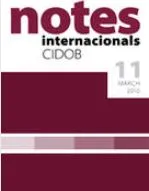Pakistan's "Elephant in the room". The Mysterious Case of Balochistan

Notes internacionals CIDOB, núm. 11
Situated between Iran, Afghanistan and the Arabian sea, Balo-chistan is the largest of Pakistan’s four provinces. Yet, paradoxi-cally, it is also the poorest - despite being generously endowed with natural resources that provide vast rangeland for cattle and other livestock. Its southern border makes up about two-thirds of the national coastline, giving access to a large pool of fishery resources. It has large deposits of coal, lead, copper, gold and other minerals. The province is ideally situated for trade with Iran, Afghanistan, Central Asia and the Persian Gulf countries. Over the last four decades, the province supplied cheap natu-ral gas to Pakistan’s economic centres, and indeed, its Sui gas fields can be said to have fuelled Pakistan’s 20th century industri-alization.
However, the province continues to experience the highest levels of poverty in the country (on par with the NWFP, the province with traditionally the highest measured poverty levels in Paki-stan); the lowest social indicators for education, literacy, health, water and sanitation for 2006-07;1 and the weakest governance. Its geographical remoteness and difficult terrain has placed it at the margins of both economic and social development, and has resulted in low population density and high out-migration. Balochistan culture is primarily tribal, deeply patriarchal and conservative; and its society is dominated by tribal chieftains who form its ruling elite. It has a reputation as a “backward” region, far from the economic or political hub, riddled by tribal disputes which sporadically erupt (and frequently interrupt the gas supply, when pipelines are blown up to score points by warring tribesmen).
Semi-neglected in the federal government’s distribution of na-tional revenue, and seen as a backwater, at first glance Balo-chistan is not an obvious candidate for the role of key player in the next phase of the Afghan conflict and in the survival of Pakistan as a nation. However, the current situation in January 2010, at the beginning of the second decade of the new millen-nium, indicates otherwise.
(...)